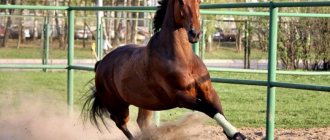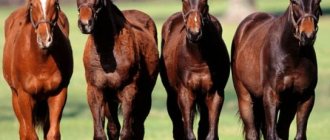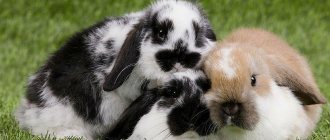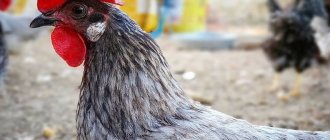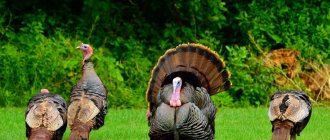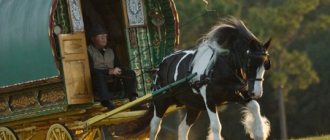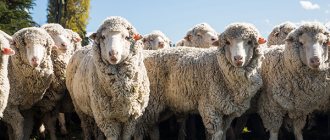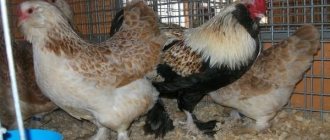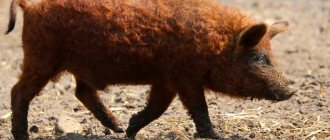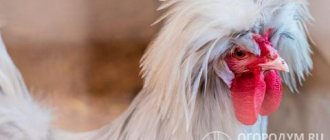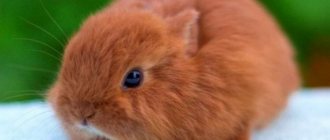The Don horse among domestic purebred breeds is considered one of the oldest and at the same time the most original. It was bred as a universal breed, suitable for both riding and harnessing. Donchak have never been the best horses and have always been inferior to pure riding breeds, but their endurance is truly legendary. Unfortunately, today this breed is on the verge of extinction, and it is possible that it will disappear before the end of the century. Already now, Don horses in videos are very rare, being much inferior in popularity to Arabian, English and Akhal-Teke horses.
Brief description of the breed
The Don horse changed during its development and went through different stages of improvement. Over time, one breed began to include two subspecies, this was largely influenced by the environment. The horse, which was closer to its ancestors, stands out with a dark shade, a small height of no more than 1.5 meters to the level of the withers. Despite its lean body constitution, the horse had long limbs and an elegant neck. And although this horse was not famous for any colorful features in its exterior, it demonstrated stamina, endurance and agility in the trot and gallop.
The second subspecies of the Don horse, obtained by crossing steppe individuals with English thoroughbred horses, spread rapidly, gaining popularity. The Don horse was stately, distinguished not only by its physique, but also by special characteristics. The horse was distinguished by its tall stature, alluring deep gaze, and golden tint of color. Horse breeders attribute all the charms of the Don horse to the eastern blood that participated in the creation of the Don horse.
Types of exterior of the Don breed
Modern Don horses have a strong constitution. The eastern intrabreed type may be prone to a delicate constitution. Rough and loose type are unacceptable.
The head of Don horses is most often small, the profile is straight. The ears are medium in size. The eyes are large. Wide ganache. The back of the head is long.
The neck is of medium length, dry, light with correct carriage and high reach. In the Eastern Riding and Riding types, a long neck is preferred.
Important! An Adam's apple or "deer" neck, as well as low or too high neck carriage in horses of the Don breed are unacceptable.
The topline of the body is smooth due to the poorly defined withers. This is a sign that is very undesirable for a riding horse, but acceptable for a draft horse. Once upon a time, the Don breed was classified as a horse-drawn breed, and low withers were quite acceptable. Today, Don horses are used only as riding horses, and selection work is being done on the correct structure of the withers. Theoretically, since practically this is impossible due to too few breeding stock. The best structure of the withers is found in riding types.
The back is strong and straight. A soft back is a disadvantage. At the same time, a straight top line, when the dorsal, lumbar and pelvic spine forms a horizontal line, is undesirable. Previously, such a structure was very common in the Don breed, but today it is undesirable, and a horse with such a structure is removed from the breeding stock.
The loin is wide and level. The defects are a convex, sunken or long lumbar region.
Croup most often does not meet modern requirements. Ideally, it should be a long, well-muscled croup with a medium slope.
The thoracic region is wide, long and deep. The lower line of the chest is most often located below the elbow joint. A different structure is considered a disadvantage undesirable for breeding.
Legs with correct and wide stance. On the front ones there may be markings of varying degrees of severity. On the hindquarters there may be an X-shaped posture, most often a consequence of underfeeding during foaling. When viewed from the front, the front legs should cover the hind legs and vice versa.
The structure of the limbs is the main problem in the Don breed. The front legs may have a short and straight shoulder blade. The forearm, although of good length, is often not sufficiently muscled. A “sunken”, that is, concave-shaped, wrist can still be encountered. The joints may also be too small in relation to the horse's overall size. Sometimes there is an interception under the wrist. The fetlock joint may be raw. There are soft and end headstocks, although usually the slope is normal. Hoof with good horn, small size.
There are fewer complaints about the structure of the hind limbs, but there are also some. There is insufficient muscularity in the thighs and sometimes straightened hocks. The infusion of the blood of Arabian and Thoroughbred horses into the Don horses significantly improved the structure of the hind legs. The highest quality hind limbs are most common among representatives of the riding type.
Intrabreed types
There are 5 types of the Donskoy breed:
- Oriental;
- East Karabakh;
- eastern massive;
- massive-eastern;
- riding
The types differ somewhat in size and structure. Even in photographs of intrabreed types of Don horses, these differences are clearly visible. Besides growth.
Oriental horses must be at least 163 cm tall. They often have a graceful head with a fine snore and large, thin nostrils. In the photo above is the Donskoy stallion Sarbon of the eastern type.
The East Karabakh type is smaller: about 160 cm. But the horses are wide, well muscled, with dry legs. Horses of this type can be well suited for racing. In the photo there is a Donskoy stallion. Heroism of the East Karabakh type.
Riding horses are most suitable for use in modern equestrian sports. The riding type has a particularly good combination of qualities, combining the qualities of a riding horse with an oriental breed. In the photo is the Donskoy stallion Collection of riding type.
The eastern massive and massive eastern types are large-sized animals: from 165 cm at the withers. Suitable not only for riding, but also for working in harness.
Character of the Don horses
The characteristics of Don breed horses are often unflattering in this regard. There is a belief that these are evil animals, at best a “one-master horse.” The character of Don horses, raised on year-round grazing in the steppe, is often really not sugar. But in relation to dogs, not humans. In winter, Don horses are often forced to fight off wolves, as in the old days, and there is a known case when a one and a half year old filly from the Salsky steppes killed a wolf with one blow of her front legs in front of the herd keepers. Given the traditional fear of wolves, this can really be impressive.
Otherwise, Don horses do not have an evil character, but a wild state. Until now, factories often ship young animals that, until the moment of sale, had only seen humans from afar. But according to buyers, Don foals are tamed literally in a week, without showing any evil character.
Suits
Just 5 years ago it was believed that a horse of the Don breed had only a red color, divided into colors:
- ginger;
- golden red;
- brown;
- dark red;
- light red;
- light golden red;
- light brown;
- golden brown;
- light golden brown;
- dark brown.
But that was until one corrosive owner of the Budennovskaya mare began to doubt the color of her animal. Although the horse is registered in the Civil Code of the Budennovskaya breed, in fact it is an Anglo-Don horse. With the development of genetic research, many horse owners have the opportunity to make sure what color their pet is. The result of the DNA analysis was very interesting. The mare turned out to be a cow. Further collection of material showed that there are not so few Don and Budennovsky horses of brown color in the breeds.
Thus, the Donchak people added kauraya to the generally accepted red color. For unknown reasons, VNIIK does not want to admit this fact, although in the database there are even bay Don horses that received their color from an Akhal-Teke or Arabian stallion, permitted for incorporation into the breed. The gene that determines the brown color is inherent in steppe horses. That is, the Donchak people received this color much earlier than the blood of Arabian, Akhal-Teke or Thoroughbred riding stallions was added to them. And the brown horse also looks red to the untrained eye.
The brown mare Mystika is the “culprit of the color revolution.” She received the brown color from her Donskaya mother.
Interesting! In the 30s, the Donchak people were not yet exclusively red; among them there were bay ones.
This is due to the fact that in those years the blood of Thoroughbred horses was actively infused into the Don breed.
In addition to the brown and red, the Don breed also includes a piebald color of the sabino type. True, these horses are also included in the Civil Procedure Code as red horses.
Piebald Donskoy stallion Bagor, recorded in the Civil Procedure Code as golden-red.
History of the breed
In the southern steppes near the Volga and Dnieper rivers, steppe horses were initially seen, which were in fact the now indigenous Don horses. As time passes, history shows many nomadic tribes and peoples passing through Russian lands, conquerors and vagabonds. As indicated in the historical notes of horse breeders of ancient times, the steppe horse more than once merged with Mongolian horses and other eastern breeds of horses, and after a while a new breed was formed - the Nogai. The Nogai horse became the ancestor of subsequent Cossack and Don horses. She was transported to the noble Moscow stables, where she learned cavalry riding and other riding skills.
History says that military actions and battles in which the Cossacks won brought weapons and equipment of the defeated side to the Russian people. Then horses from the cavalry of defeated enemies were taken as trophies; these were noble Persian and Turkish horses. They were purposefully crossed with the Steppe horse, due to this, the modern Don breed of horses now exists. The steppe horse was always taken as the basis for the Don Horse, and new noble blood from the strongest breeds was mixed in.
Alexander Fedorovich Grushetsky contributed to the development of the breed, who in every possible way protected his Trans-Don horse breeding, breeding horses for the Russian army. Grushetsky was a historian and kept notes where he said that the tribes in that area were divided into two parts - Mohammedans and Buddhists. This division of nationalities also affected animals, which changed due to different conditions of detention and concepts. The steppe horse became smaller in stature and acquired a more muscular, lush mane while living on the left bank of the Volga. The second subspecies, a tall horse with an aristocratic exterior, inhabited the right bank of the river.
Both subspecies of horses were successfully used in wars and battles for Russian lands; they became famous for their speed, unbridled temperament, endurance and agility. Wars were won and the conquered cavalry in every possible way improved the blood and abilities of the Don Horse. And, despite the fact that after a while the battles stopped, and the eastern horses stopped improving the Russian horse, the domestic horse breeding took control of the development and improvement of the breed. The supply of Turkmen strong horse breeds continued to make a valuable contribution to the Russian glorious Don Horse breed. In the period of the late 19th - mid-20th centuries, instead of Turkmen horse breeding, the horse breeding industry began to improve domestic horses with Karabakh horses.
The Karabakh breed has significantly transformed the color of the modern Don horse. The stallions were born with a unique golden coat, replacing the usual bay, red, gray and brown colors. At the end of the 19th century, Russian soldiers needed the strongest horses, so the Don Horse was crossed with thoroughbred riding horses. The horses acquired impressive appearance and powerful skills and abilities.
In the 20th century, the breed was disproportionately influenced by English horses. After this, horse breeding established certain norms and standards for breeding pure breeds in order to form horses of the same type with a single pedigree. After the fighting, the breed was on the verge of extinction. And only in 1920 the breed began to be intensively restored; the first stud book of Don horses was created in 1934.
Contents and diet
Despite the fact that the Don horse is a factory breed, it is well adapted to the herd lifestyle and, on free grazing, is able to gain sufficient muscle mass without grain.
Donchak dogs can lose up to 40% of their weight during hikes and recover quickly under normal conditions.
To ensure a healthy diet, you should focus on approximate standards; this does not require making precise mathematical calculations.
A properly fed horse will be energetic, active, with a good appetite and a shiny coat.
Before preparing feed, you need to know the horse's condition. It determines the balance between consumption and expenditure of energy received:
- if you look at the horse from behind, the spine should be at the same level as the back muscles;
- if it protrudes above the muscles, then the horse is not well-fed or even emaciated. A thin horse has visible ribs, prominent ilia and sunken muscles;
- if the spine falls below the muscle line, then the horse is overweight. Such an animal will have large accumulations of fat on the shoulders and sides, as well as above the withers.
The daily weight of feed should be 1.5-3% of the horse’s weight. For healthy digestion of a horse that has rested from work, free access to water is necessary.
It removes toxic metabolic products that otherwise accumulate in the body, causing loss of appetite, weakness and complicating the secretion of glands. Under high loads, the horse drinks up to 60 liters of fluid per day.
When preparing your diet, you should consider the following points.
Work intensity:
- A) light – 4 hours a day.
- B) average – 6 hours a day.
- C) heavy – 8 hours a day.
Physical state
Increased portions should be given to growing, sick and exhausted animals, as well as to those who are weakened or forced to expend additional energy: covering stallions, pregnant mares in the last 3 months of pregnancy, horses during lactation.
Sufficient abundance of the diet is determined by the stability of live weight.
Features of the environment
Working in low temperatures, Don horses are forced to spend energy restoring heat, even when wearing blankets to protect them from snow and frost.
In winter, you should pay attention to increasing your normal diet. The basis of the diet is hay or pasture grass, which serves as the main source of fiber.
They should make up at least half of the daily feed (0.75% body weight).
The hay must be clean, not dusty or contaminated, as poor quality feed has a detrimental effect on the horse's health. Stale grass clippings are unacceptable - wilted plants cause colic.
Vitamin-herbal flour with immunomodulatory bronchopulmonary anti-inflammatory effect
Multi-herb vitamin-herbal flour
Vitamin-herbal cereal-legume flour
Herbivores absorb and digest food very slowly due to the length of the gastrointestinal tract, so it is worth setting aside at least 2 hours for one meal, starting each meal no later than 40 minutes before starting work.
The more intensive the work, the longer the intervals between feedings should be established. On average, a Don horse needs three feedings a day.
The smallest portion of roughage is given at noon, a little more in the morning, and even more at noon. The amount of concentrated feed is increased in the evening, and equal portions are given in the morning and afternoon.
Heavy breed types of Don horses are prone to rapid weight gain.
Steamed porridge is a way of tasty and healthy nutrition that does not lead to excess weight.
1 kg of oats, 50 g of flax seeds, 7.5 g of salt are poured into a closed container and steamed with boiling water until the mixture is saturated with liquid. Then add 500 g of wheat bran in an even layer. The porridge is wrapped to preserve the heat for a couple of hours.
Before dispensing, the top layer is mixed with the rest of the mass - horses enjoy the resulting porridge with appetite, it does not burden and cleanses the intestines.
Porridge, steaming mixture
Special mixture (mash) for horses without oats
When feeding, it is important to follow the sequence - first give roughage, then vegetables, treats and, only after that, concentrates.
A hungry horse does not chew food well.
Rough food eaten after concentrates will rub undigested grain from the stomach into the intestines, which can increase fermentation and cause pain and colic.
Light and tasty muesli without oats with apples and red rowan
The transition to a new type of food occurs gradually, starting with a small amount.
Due to forcing and sudden changes in food, an eating disorder may occur. Normally, the transfer should take no more than two weeks with a gradual increase in the proportion of new concentrates.
Winter diet
Summer diet
Lifestyle in nature
In order to get to know the Don breed of horses better, you need to know the features of their maintenance, animal care, feeding and its characteristic features.
Content
Few people immediately realize how important the conditions of keeping a horse are in the development of its character and disposition. If a horse spends most of its time in a herd, they stand out for their independence and love of freedom. If the animal spends time in the stable from birth, in close contact with humans, the horse will become loyal and reliable. The Don horse recognizes only one owner. A stranger can make her irritated and even angry.
Care
In order for a horse to be friendly with its owner, he needs to regularly take measures to care for the animal. The horse is bathed twice a week in the warm season. The mane and tail should be washed with shampoo and conditioner, combed with a quality brush and braided. After riding, hooves should be checked for integrity and cleaned of dust and dirt. After walking, be sure to wipe your nostrils so that the humid environment does not contribute to the occurrence of infections. At least twice a year, the animal must be examined by a veterinarian and undergo routine vaccinations.
Nutrition
To raise a breeding sport horse, it needs complete, varied and plentiful nutrition. You need to purchase food of high quality, without chemical additives, with a pleasant color and smell. Mares, foals and young animals feed on pasture in the warm season; Don horses love ryegrass, clover, meadow grass and timothy grass most of all. Concentrated feed is given in 2-4 kg doses to mares, and 4-5 kg to young animals. At the moment the animals merge, they are given milk, sugar and eggs. Horses eat about 5 kg of hay per day. So that the horse does not run out of energy and strength, it needs grain feed. Vegetable crops will be useful. A riding horse needs minerals, vitamins and salt.
Character and habits
The horse is highly trainable and displays amazing discipline. At stallion age and older, the horse's character is approximately the same type. If a horse grows up without the presence of a person, it will be obstinate and even evil. This is because the horse was originally used for military purposes, where no one could do without anger and aggression.
If there is a person next to the animal, the horse will realize that he is feeding and watering it, so it will behave diligently. A horse raised in a stable will love its owner endlessly. If an animal grows up in a herd, it will be unbridled and without contact with humans.
Breeding
The best producers of Donchak are considered to be individuals from the Salsky stud farm named after. CM. Budyonny. When selecting breeding sires, they are assessed on a 10-point scale. Stallions with a score of at least 8 points and mares with a score of at least 7 points are suitable for breeding.
Today, breeders have to improve the breed qualities of the Don Chaks due to the small number of representatives of this breed with Arabian, English and Akhalekin horses, and also use frozen semen of the best representatives of the Don breed of horses.
Only individuals who have reached three years of age participate in breeding. To protect animals from injury, breeders use only the manual mating method, in which a man holds the mare in a halter by the reins, or ties her to a pen.
A foal that is born is recognized as a Donchak only if the presence of purebred genes in it is at least 5/16. Only in this case are the young animals given a breeding passport and allowed to participate in breeding and exhibitions. Upon reaching 6 months of age, a purebred Don breed foal receives a brand with a personal number indicating the date of his birth.
Application of Donchak
Due to its structure and character, the Don Horse is recognized as universal, which affected its popularity. The horse’s worthy character traits help it to learn easily, which is why such horses are used in household work, sports and entertainment.
In order to predetermine the areas of application of Don horses, we can identify those areas of life in which they demonstrate success:
- Sports: A calm and disciplined horse will show results in show jumping, eventing, running and hobby classes.
- Riding: A horse's hindquarters are wider than its front, so the rider may feel some discomfort. But this helps the rider to train endurance in the saddle.
- Light harness: Although the horse will not be able to handle heavy loads, light harnesses are a suitable activity for him.
- Rider training: due to the unique obedience and discipline of Don horses, they are often used in equestrian clubs to train new riders.
The modern Don horse is distinguished by its colorful exterior and Russian grandeur, due to which it is often used for exhibitions. In addition, farming does not lose its popularity; the main rule of breeding the Don breed is not to cross a horse with other breeds.
Reviews
According to reviews from horse breeders, the advantages include:
- courage and equanimity;
- beautiful exterior;
- high intellectual development;
- loyalty to the owner.
Flaws:
- speed is not high enough for sports enthusiasts;
- average maneuverability;
- the viewing angle is reduced due to the short back of the head;
- the character is complex if you do not have enough time for a particular individual;
- constant exertion and physical exercise are required;
- loyalty to only one person, which is not suitable for those who intend to use the individual for riding school or renting for walks.
Interesting Facts
- The Don Cossacks brought fame and popularity to the Don horse, who drove out Napoleon's armies with their own strength and with the help of these horses. In addition, the Cossacks were known to the world for horse riding; they rode in shortened stirrups.
- The French enemy armies were amazed at the speed of movement of the Cossacks. The records of Napoleon's soldiers said that the Cossacks could gallop without a run, immediately making a lightning stop. The horses merged their bodies with the rider so much, as if feeling his courage and bravery.
- During the battles, Don horses were distinguished by excellent skills in reconnaissance and raid special operations of the Cossacks.
- The war with the French in 1812 ended, after which the Don stud farms were recognized as the best and Don horses began to be supplied en masse to the Russian army.
- Currently, the Donskaya horse is considered an animal on the verge of extinction. Russian stud farms have a minimum number of horses.
Photo gallery
Don horse - face
Don horse in the paddock
Young Don horse
Donskaya horse entering
Don horse and foal
Proper nutrition
What should be included in the diet
A proper diet is the key to a healthy horse and efficient performance under saddle. The menu should include:
- hay;
- straw;
- fresh grass (in summer);
- bran;
- oats;
- muesli;
- vitamins;
- carrots, apples, watermelon rinds.
Proportions are calculated depending on the load - the type of sport in which the Don breed horse is involved.
In the summer, a young horse needs to eat an average of 3-4 kilograms of hay. 2 kilograms of straw. One standard bucket of oats. Walking - at least 2 hours a day.
In winter, bran, vitamins, and muesli are added to the diet. And also feed additives.
Vegetables and fruits are given 3-4 times a week. It will not be harmful to give the animal salt and feed chalk as sources of microelements.
Watering and feeding method
Water must be fully available. With the exception of time after training or competition. The shelf is removed for 2-3 hours. And then put back in the stall.
It is better to place hay for a horse on the floor. The animal bends its neck and reaches for food. Just like in the wild. As a result, the vertebrae are constantly moving - a useful exercise.
How much does a Don horse cost?
Setting the price for a Donskaya horse depends on its health, age, documents confirming pedigree and breeding ties, as well as on the breeding area. But as practice shows, a decent horse of the Donskaya breed will cost the buyer about 5 million rubles. Such a colossal amount is easily explained - at the present time, the horse breed is on the verge of extinction, the number is gradually declining.
It will be much cheaper to buy a Don Chak at a young age; moreover, a young individual is easier to tame and gain love and respect from it. An adult horse may not recognize the new owner, showing aggression. But a horse raised by one person will love its owner limitlessly, trying to fulfill all the requirements and wishes.
How to maintain and care
The main rule of communication
The Don horse is unpretentious. But because of her character, it is sometimes difficult to deal with her.
For representatives of this breed, there is one cherished rule - not to pay much attention to them. Otherwise, the Donetsk people begin to become impudent. And no longer behave affectionately, but rather the opposite.
Nuances of care
After each training session, the horse's legs are washed under cool water. It is recommended to additionally lubricate them with special cooling and insulating creams.
The hooves are lubricated with a special varnish. And from time to time they are treated with hydrogen peroxide. This way they will not crack and cause pain to the animal.
Once every six months, the Don horse is given new horseshoes. The cost of such a procedure is about 2000 rubles. Hoofs are cleaned once every two months. Price – 500 rubles. It is advisable to have a specialist do this.
Tip: before each workout or work, moisten the cotton wool with water. And thoroughly rinse the animal’s nostrils. After this procedure, the nose is cleaned. And the horse breathes better.
Additional requirements
It is important to encourage a horse or horse of the Don breed. These are quite vulnerable animals. And at a young age they are also difficult to manage.
Before training, the pet is given a carrot or an apple each time. This way he will begin to understand that good gaits will reward him with goodies. The method is used to strengthen control. And I must say that it works.
The area of the stall for keeping horses of the Don breed should be 12 square meters per individual. Be sure to have a large window without broken glass, and a feeding trough with a drinking bowl. If possible, “balconies” are also installed in the stables - exits to the street.
In winter, you need to put a thick stall blanket on the animal. In bad weather - fleece.
From late October to mid-December, blankets that are less insulated than winter blankets are usually used. If a horse gets used to standing in a stall in a winter blanket at a temperature of 5 to 15 degrees, then in cold weather it will simply freeze.
Donchak today
The Don horses are currently in an emergency situation, at risk of disappearing altogether. As statistics show, the Red Book should already include the Don Horse in its arsenal, the number of which has not shown growth for a long time. As of 2010, only 20 pure breed individuals were counted. At the dawn of farming, each owner owned a dozen or even a hundred of these horses.
Such disappointing statistics are due to the fact that many horse breeding enterprises and farms went bankrupt, selling off horses. The territories of former factories were bought by entrepreneurs who did not care about horses. But, despite such a difficult fate, such majestic and historically important horses still find their field; they are used in equestrian sports and horse riding training. Small entrepreneurs, albeit slightly, still breed these horses. Today, the Donchak people are recognized as historically important elements in the formation of Russia.
Victorious moments
Overcoming routes
Don horses have merits in sports, but not many people know about them.
Famous case: a trip from Rostov-on-Don to the city of Salsk in 1920. Several breeds took part: Akhal-Teke, Arabians, thoroughbred horses and others.
The best result was achieved by the Donchak, who covered the route in 19 hours. And this despite the fact that the air temperature during the competition was more than 40 degrees. The horse endured all the inconveniences without complications. And I was ready to move on.
In the same year, an endurance tournament of Don breed horses was held. 200-250 heads took part. The best result was shown by the horse Daughter of Bukvarka. She covered more than 1,700 kilometers in 15 days. The Don stallion Zanos showed a good time. He walked 300 kilometers in 19 hours.
